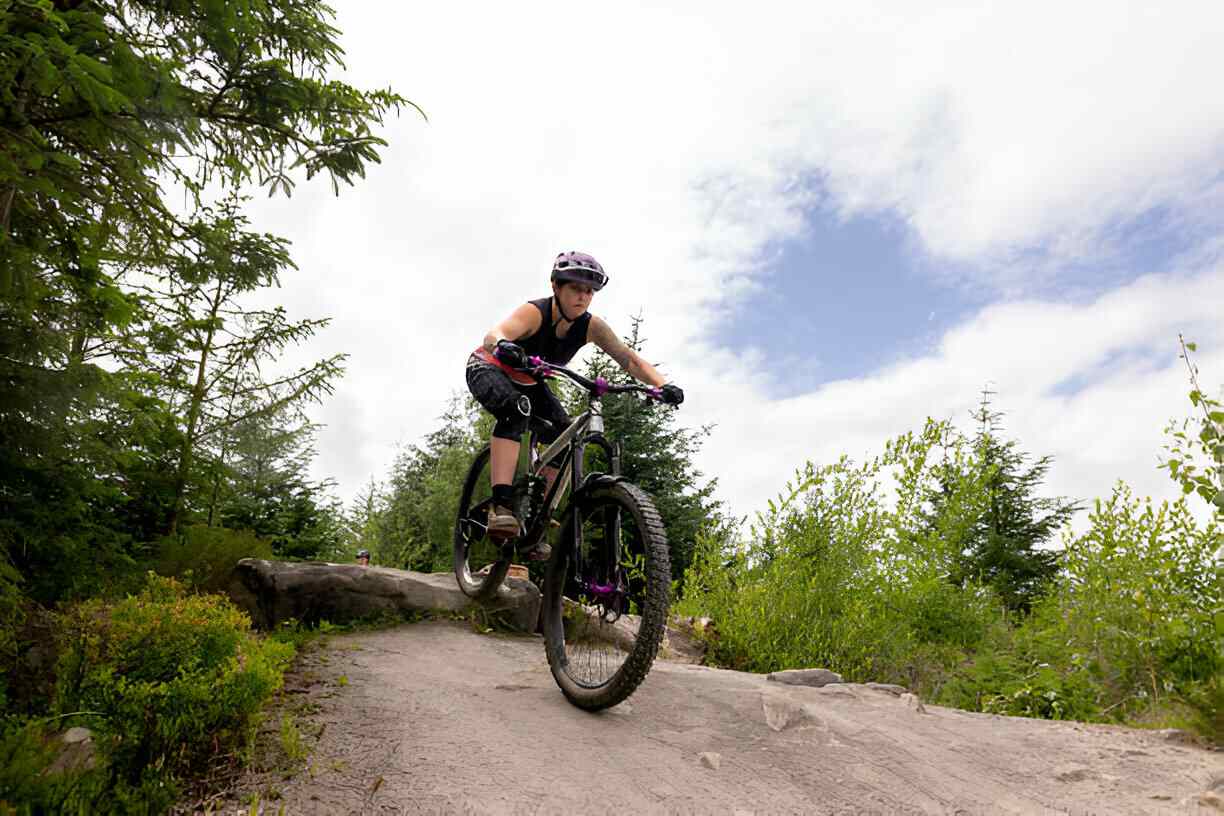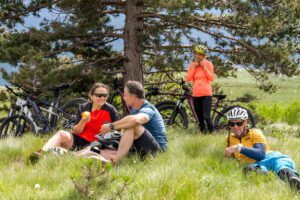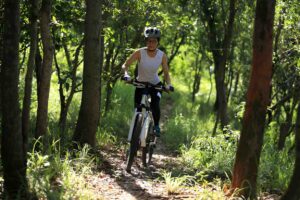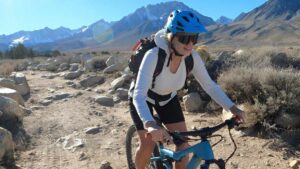This discipline of mountain biking has taken the aspect of gravitational assistance to its best potential. With steep trails and natural obstacles like rocks, roots, and drops, this biking is done at quite high speeds, needing not only physically fit riders but also those with good bike control and quick reflexes. What mainly sets this activity apart from other forms of cycling is that it calls for special gear and acute awareness of the safety measures involved, hence the need for the right equipment.
Nothing is better than having the right gear when it comes to downhill mountain biking or any other activity, from a full-face helmet that will maximize protection against an accident to body armor, which ensures your body doesn’t suffer high-speed tumbles. Performance full-suspension bikes with robust brakes, sturdy tires, and finely tuned shock absorbers are important to an extent. They are exactly tailored to resist such massive stress associated with high-speed descent and strong impacts. Besides, correct footwear provides minimum slipping and enables full control over the unpredictable terrain; padded gloves enchase a firm grip and damp vibrations.
Future tips will help you discuss choosing the right bike setup focusing on frame geometry and suspension settings specific to different terrains and riding styles. Discussions will also cover tips about finding protective gear that will balance durability with comfort, such as lightweight composite materials and multi-impact foams. A seasoned downhill biker gives this example through their own personal stories, giving practical insight to illustrate these points for much easier understanding of how small changes make a real difference in performance and safety.
Moreover, the attendees will receive bicycle maintenance tips and, most importantly, pre-ride checklists to make sure that everything is in top condition before embarking on the trails. This shows just how important preparation really can be in this potentially high-risk sport.
Future tips will include advanced riding techniques, sharp turn techniques, speed handling on the straights, and the most difficult obstacles one may encounter. Details on training routines and workout plans will also be provided to help enhance balance and core strength. The psychological aspect will be locked into as well, looking at ways to build confidence and nuance of decision making in nanoseconds that are critical for accident avoidance and overall performance improvement.
- Downhill mountain biking requires special riding gear: full-face helmet, goggles, gloves, and body armor, to ensure maximum safety and high performance.
- Downhill racing bikes are heavier with dual suspension systems that help absorb impacts from rough terrains and jumps.
- High stopping power braking systems like hydraulic disc brakes are essential in negotiating steep descents without getting worried about safety.
- Proper shoes, either flat-soled or clipless biking shoes, will give one a better grip on the pedals and more control over the bike while negotiating a downhill ride.
- The bike requires regular maintenance to keep a check on tire pressure, brake pads, and suspension settings to ensure a safe and smooth ride.
- Body weight distribution skills and balance are things one needs to learn in an effort to negotiate sharp turns and uneven trails effectively.
- Building confidence and skill in downhill mountain biking involves starting with smaller descents and gradually working up to the tougher trails. A hydration pack or water bottle is important to keep a rider well-hydrated during long rides so that he or she does not become fatigued out of dehydration, as this will negatively impact performance. Know the kinds of obstacles you will come across by either walking the course of routes or studying a map before riding, so that you can be aware of the areas of evasion and plan your route accordingly.
- Wearing bright-colored or reflective clothing will also make you easily visible to other riders and users of the trail from afar, thus reducing the risk of accidents.
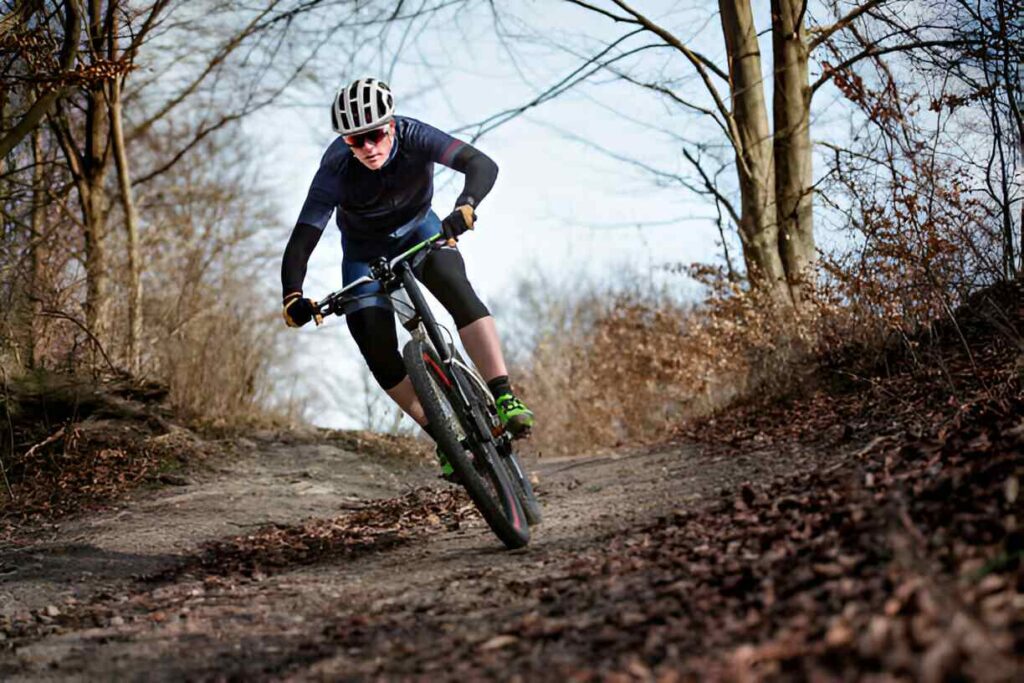
What are the must-know tips and gear for downhill mountain biking?
Downhill Mountain Biking is one of the most extreme, physically demanding sports activities that require special equipment and preparation. Some famous slang to understand includes “Full-Face Helmet,” which protects the whole head; “Body Armor,” pads and guards for major areas of your body like the back, chest, and knees; “Clipless Pedals,” which allow riders to connect with pedals using shoes more accurately and strongly; and “Dropper Post,” by which one can adjust the seat height during a ride, ensuring perfect maneuverability in all kinds of situations.
Downhill mountain biking originated in the early 1970s and epitomizes exactly what the name suggests: speed and technical prowess. Its parent sport, mountain biking, can comprise uphill and downhill riding. However, Downhill Mountain biking comes into play only with fast descents across rough landscapes; this involves riders taking their bikes down extremely steep trails that are covered in rocks, roots, and jumps, demanding an extreme level of agility and precision. Each of these areas has a unique focus that requires special equipment and preparation to ensure performance and safety.
How to Pick Out the Perfect Hot Beverage for Your Morning Routine
Flavor Profile Preferences
The first thing you might want to consider when picking out your morning hot beverage is flavor profile preference. There are a great deal of options in coffee and teas. They come from different parts of the world and have vastly different characteristics. Regarding coffee, that of Ethiopia beans is majorly fruity and complex in flavor, while that of Colombia has a smooth and mild taste. For tea, green tea will give a refreshing taste, a bit grassy, while black tea will offer a robust and rich taste. Herbal tea, like tea from flowers such as chamomile flowers, adds a floral, soothing profile with no caffeine, suitable for those who do not want to take caffeine.
Brewing Methods
Indeed, the brewing method greatly defines your beverage’s flavor and strength. Among others, these are a French press that provides fuller and richer flavor, a drip method for convenience and good balance, and an espresso machine that is widely famous for its strong, concentrated coffee shots. Tea lovers can choose to steep loose-leaf tea for a purer taste, use tea bags for convenience, or use a teapot with an infuser for a touch of ceremony. Temperature of the water, steeping time, and grade of the water also considerably alter the flavor in these methods.
Empowering Self: Enter the Natural Skincare World
Benefits of Natural Ingredients
There is growing interest in organic skincare because of associated benefits that one derives from using such products. The presence of natural ingredients, like aloe vera, confers skin soothing and hydration properties with control of inflammation and irritation. Besides, shea butter is enjoyed as a great moisturizer among dry and sensitive skin types. Some essential oils, like tea tree oil, are antiseptic and have antimicrobial properties; hence, very useful for people who constantly suffer from acne. This is because organic ingredients do not hold any harmful chemicals and artificial fragrances, hence the possibility of allergic reactions goes down drastically.
Certifications and Labels
Take a look at some of the key certifications and labels that you would come across on natural skincare products so that you are absolutely sure of the fact that you are actually buying an organic product. Look for certifications from reputed organizations like USDA Organic, Cosmos Organic, or Ecocert. These labels serve as proofs that the produce goes through very strict measures in terms of organic farming and production. Other terms such as “natural,” “eco-friendly,” and “non-toxic” are also dubious since they are not entirely indicators for the organic nature of a product. One can make conscious decisions by reading through the ingredients and knowing these certifications.
How to Choose Good Leather Goods
Types of Leather
Understanding the various types of leather is very important in choosing high-quality leather goods. Full-grain leather is the toughest and of the highest quality—it has all the natural grain of the hide, ages beautifully, and develops a patina. Top-grain leather is also of high quality, although less hard-wearing than the former, being sanded to rid it of imperfections. Genuine leather is considered the most inferior. It is the layer remaining of hide after the top layer has been removed. It is strong, too, but does not compare with the other two in terms of durability and looks.
Workmanship and Construction
Much of the leather goods quality and durability derives from craftsmanship and construction. Hand-stitched leather goods can be more durable than machine-stitched leather products; the stitching can support much more wear and tear. The edge finishing methods, like burnishing or edge painting, help to make the product more endurable and beautiful in its appearance. Among the details that one has to pay attention to in order to get an idea about the construction quality of a leather product are the thread type used, the quality of hardware, and the accuracy of stitching.
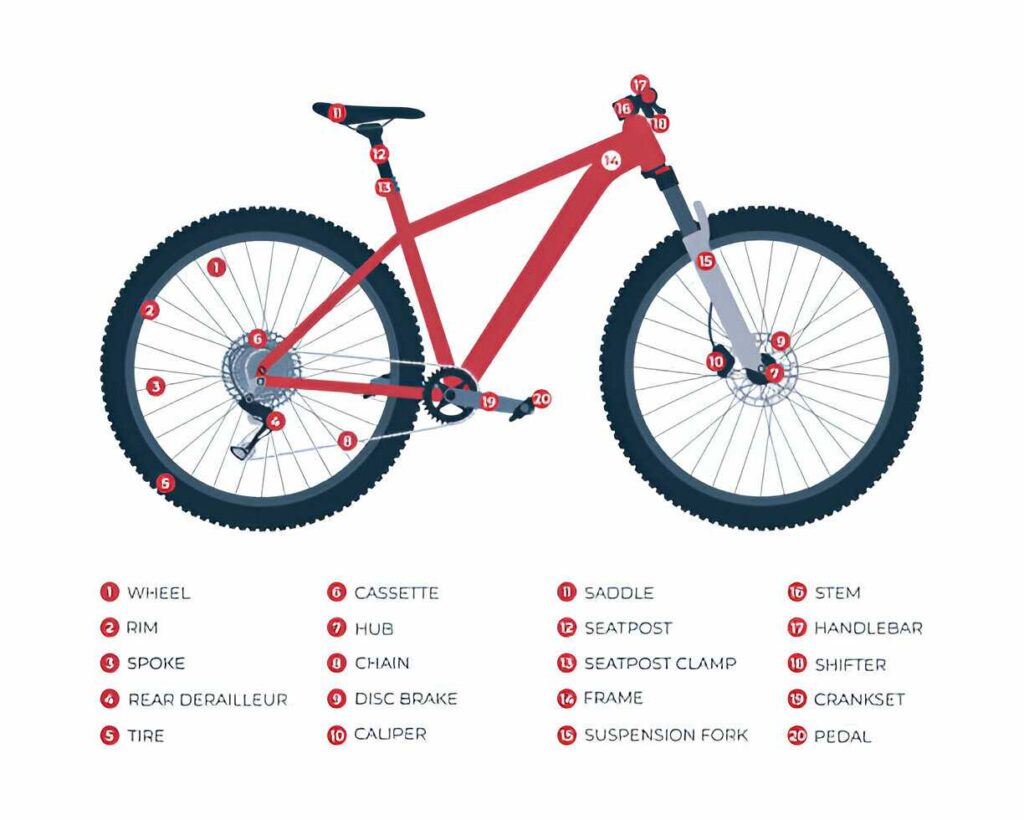
What are some must-have gear items for downhill mountain biking?
Some of the most essential gears for a downhill mountain biker are a full helmet face shield, body armor, gloves, and proper footwear. A full helmet give you full protection for both the head and face. This is quite critical considering that you’re going to reach some speed over very technical ground. Body armor—knee pads, elbow pad, chest protector—covers the body from impact and abrasion.
Gloves will give you a great, secure hold of the handlebars and protect your hands in case you fall. Right shoes provide better grip and stability, basically gluing your feet to the pedals. Also, dress in breathable and moisture-wicking clothes that wick off your sweat so you’ll stay dry and comfortable throughout your rides.
How do I set up my bike for downhill mountain biking?
Proper bike setup in any respect is essential for downhill mountain biking. First is to have suspension dialed and set for the riding you’re about to do and how you ride. This means such a setting of the front and the rear suspension to allow adequate travel to be supportive and responsive enough to enable riding rough and technical sections flowingly. The second ingredient in tire pressure can be run lower for more grip but does increase the possibility of getting a pinch flat.
Equally important is the setup of the brakes. Ensure that your brakes are in good condition with enough stopping power to enable you to go down steep hills and reach high speeds. Adjust the brake levers so you can apply force comfortably without straining your hands. Wider handlebars bring better control on technical ground.
How can one improve his or her downhill biking skills?
Hone your downhill biking skills by constant practice, with key techniques being correct body positioning—keeping the body low and centered over the bike, elbows and knees slightly bent to absorb shocks. Better control over the bike on difficult paths is the main thing. Keep your eyes on the path way ahead and scan it for obstacles; this will give you enough time to plan your line and react appropriately.
Other important skills include brake modulation—feathering the brakes lightly rather than braking abruptly so you have maximum traction and control. Cornering efficiently involves leaning the bike while your body remains upright, letting the bike do the work. Practice on easier surfaces then graduate for more challenge, building confidence and prowess.
Why is it important to wear body armor in downhill mountain biking?
Body armor is important for downhill mountain bikers due to the potentially high dangers involved in the sport. Quite understandably, with high speeds and technical, often rocky, terrain comes frequent falling and crashing. Handling serious injuries is highly unthinkable since body armor absorbs the impact and serves as protection to knees, elbows, and the spine during a crash or fall. The knee and elbow pads to protect the joints from abrasions and possible fractures, while with a chest protector, worn to guard against possible hits to the torso, the addition may be made.
Moreover, body armor provides a rider with the confidence to have a go at even the most demanding trails since he has that added protection. This can be looked upon as an added psychological benefit to performance enhancement by freeing up energy and thought processes from possible injury and focusing on technique. Any serious downhill mountain bike rider should definitely invest in good-quality body armor.
What type of footwear is recommended for riding a downhill mountain bike?
Correct footwear is essential for downhill mountain biking, as this provides grip, stability, and protection. Specialized mountain biking shoes are recommended since they offer stiff soles for power transfer, but the uppers are flexible to provide comfort. In terms of flat pedal shoes with a grippy rubber sole, most downhill bikers like to have their feet attached firmly so that changes in foot positioning can be done fast.
Another uses shoes with clipless shoes, attached by cleats to the pedals, which requires more technical skill and confidence to be able to do so, especially on technical terrain. In addition, whatever forms you find yourself considering, ensure that the shoes are comfy enough to offer appropriate support and protection for your ankles from rocks and impacts. Durable construction with snug fitting makes sure that your foot doesn’t slip and gives the rider control over the bike.
How do I choose a downhill bike for me?
Looking for the right downhill bike? Consider your riding skill level, the terrain, and your budget. For a beginner, you really want that bike to be a little bit more entry-level and inexpensive; you need good-performing but not inundatingly complex gear. Start with a bike that has a robust suspension system and durable frames to match the rigors of downhill riding. As your riding skills develop, you can always upgrade to a better model with higher-quality components.
Also think about the bike’s geometry—a longer wheelbase and more slack headtube angle will improve the stability at high speed. Riding several of these models may enlighten you on what feels comfortable and fitting for your riding style. Bringing riders with experience or simply visiting specialized shops may provide valuable advice and recommendations.
How do I maintain my downhill mountain bike properly?
Regular cleaning will not only let your ride look much better but also help to keep your downhill mountain bike in its best shape. First, clean your bike after every ride. Be sure to get as much of the mud and dust out of the bike as possible, paying special attention to cleaning the mud and dirt from the chainrings, cassette, suspension, and other moving parts. Then, lubricate the chain often enough to ensure smooth shifting action and reduce wear. Replace brake pads when they are severely worn.
Be sure to check tire pressure before every ride; proper inflation is the key to performance and flat prevention. Also, check regularly for any cracks or damages over the frame, particularly after a crash. Keeping the suspension forks and shocks serviced according to the manufacturer’s recommendations in line with optimal performance. Regular professional tune-ups may also help resolve issues that could turn into big problems down the trail.
What are the best places for downhill mountain biking?
There are quite a number of famous places around the world that offer great downhill mountain biking trails. At the French Alps, and in particular, resorts like Les Gets and Alpe d’Huez have varied challenging routes with landscapes worth seeing. Whistler in Canada comes as another prime destination for its huge network of trails and well-maintained downhill parks, so it can suit any level of expertise.
Variety and exciting terrain are thus available in places such as Moab, Utah, and Mammoth Mountain, California. Most of these spots have lift-accessed trails where all you need to do is ride down. Exploring the different downhill parks will bring different experiences and complement your upgrade in riding skills.
What should I carry in my pack during a downhill ride?
Having the right items inside a pack can prove of huge importance when washing down a downhill mountain biking track. Some important items will include a multi-tool for on-the-move repairs, spare tubes or a patch kit in case of a flat tire, and a mini-pump or CO2 inflator. These are tools that can help you deal with minor mechanical issues without cutting your ride short.
In addition, bring a water bottle or hydration pack on board for hydration, and stay hydrated throughout the ride. Energy snacks or gels may prove useful in sustaining one’s energy level, again in longer descents. Bring along a first aid kit to handle minor injuries and a lightweight jacket to protect you against unexpected changes in weather. Knowing that you have everything that you need will definitely put your mind at rest, which should allow you to pay more attention to your ride.
How can I be safe while riding my downhill mountain bike?
Downhill mountain biking safety is all about proper equipment, techniques, and being situationally aware. Never ride without a full-face helmet and body armor—this will help protect you from falls and impacts. Always keep your bike serviced—brakes and suspension are two of the most important parts on the bike, as they dramatically affect your overall speed and balance control. Before any ride on a trail, know what it’s rated and what hazards to expect.
Practice good riding techniques: low center of gravity, balanced weight, proper braking to avoid skidding, and never try to ride beyond your skill capacity. Never try challenging obstacles or high speeds that will put you out of your comfort zone. Another consideration indispensable for your safety is making sure that whenever you go riding, there will always be somebody who knows the whereabouts you intend to take your ride. Keep aware and be prepared to minimize the risks and maximize your riding fun.
Final Thoughts
If one thing had to be correct, it would be the gearing in Downhill Mountain Biking. Start off with a premium full-face helmet for head and face protection, and then add some robust goggles to see clearly through all that may be experienced. Body armor and knee pads and elbow pads are quite essential and will lessen the shock of the fall upon the body. Gloves with good grip will help create better control and comfort, while downhill shoes will enhance foot stability and pedal connection.
Bring in the tips: Braking techniques are where it’s at. Use both front and rear brakes smartly to modulate your speed without skidding. Body positioning is another critical aspect. While descending, keep your weight back to maintain balance and control. Another great pre-ride check would be the tire pressure and making sure the brakes are functioning correctly, thus averting mechanical failure that could result in a spoiled ride or something even worse—an accident.
Choosing the right bike can make or break your experience with Downhill Mountain Biking. Look out for full-suspension bikes that have beefy frames and solid components built to take rough terrains. Again, the more practice one is exposed to on varied landscapes, the better equipped one will be, but also the more confident one will become.
In Downhill Mountain Biking, proper preparation, the right gear, and essential riding techniques are the three features that ensure the safety and enjoyability of riding trails.

